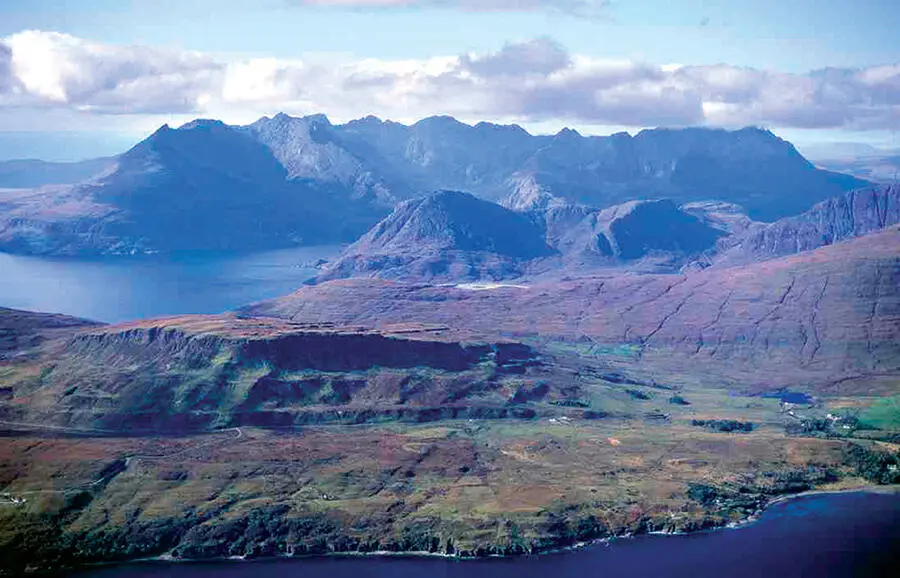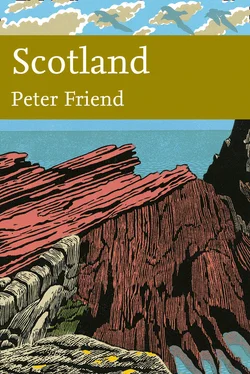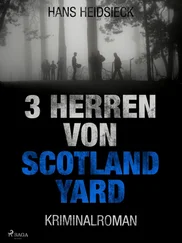Any work of this sort on the British Isles owes a fundamental debt to the British Geological Survey (BGS), now based at Keyworth near Nottingham. The numerous Survey maps and reports provide a remarkable source of carefully observed and objective information. The BGS has readily provided advice and help for this project, and helped to determine the sort of coverage and level that would be best.
The photographs that form such an important part of this book have come from many sources, and we are grateful to the following organisations and individuals for allowing us to use the results of their work (individually credited in the figure captions): Aerographica (Patricia and Angus Macdonald), Nicholas Branson, British Geological Survey, Lorne Gill, Last Refuge Limited (the late Adrian Warren, and Dae Sasitorn), David Law, Planetary Visions/Science Photo Library, Scottish Natural Heritage, Nigel Trewin.
Many other people have made important contributions by providing ideas and materials. These include John R. L. Allen, Wendy Annan, Phillip Gibbard, Alan Smith, Nigel Trewin, Nigel Woodcock and Richard West.
As with the New Naturalist volume on Southern England, this volume is dedicated to the Dr John C. Taylor Foundation, which has provided the financial support essential for the production of the imagery that is such a key part of the book’s presentation. Some 50 years ago, John spent two summers exploring the geology of Spitsbergen with Peter Friend, and the support of his foundation has made both books possible.
We wish to thank HarperCollins Publishers for their support of the New Naturalist series, and particularly Myles Archibald, and then Julia Koppitz, for enthusiasm and help throughout. Hugh Brazier, Martin Brown and Robert Gillmor have brought great talents to different aspects of preparing this book.
The cover shows a view at Siccar Point, Berwickshire (Area 5). When James Hutton and some friends visited in 1788, they recognised what is now known to be an unusally good example of an unconformity. They made geological history by seeing it as evidence of the folding, erosion and deposition of strata over an incredibly long series of episodes in the Earth’s past history (see also picture Конец ознакомительного фрагмента. Текст предоставлен ООО «ЛитРес». Прочитайте эту книгу целиком, купив полную легальную версию на ЛитРес. Безопасно оплатить книгу можно банковской картой Visa, MasterCard, Maestro, со счета мобильного телефона, с платежного терминала, в салоне МТС или Связной, через PayPal, WebMoney, Яндекс.Деньги, QIWI Кошелек, бонусными картами или другим удобным Вам способом.
).
CHAPTER 1
Looking at Scotland’s Landscapes
LANDSCAPES AND LANDFORMS
FIGURE 1IS A SCOTTISH VIEW, showing landscapes that are typical of the confections of topographic shapes, sea, light, colour and atmosphere that are enjoyed by all. The object of this book is to contribute further to that enjoyment by surveying the varied landscapes of Scotland, and to help the reader to discover the stories that lie behind the rich variety.
At least two landscapes are present in this photograph: (1) in the middle distance, terraced hills in autumn gold vegetation extend down to the shores of Loch Slapin in the foreground, about 2 km in coastal length, and (2) behind this landscape rises the dark mass of the Cuillin mountains, providing one of the most famous and distinctive of Scottish landscapes, covering an area some 10 km across and giving a skyline to this photograph that is about 15 km from the photographer.
Many enthusiasts have written about the scenery of specific parts of Scotland. In this book the aim has been to cover the whole country relatively uniformly, because the variations from place to place are interesting in themselves. But this uniformity of approach has made it necessary to adopt a rather broad-brush treatment, whilst establishing the linear scale of features by the use of maps and aerial photographs in which the scale is clear in general terms. It is useful to follow earlier authors who regarded a landscape as an area of land that can be seen from one vantage point. In the case of Figure 1, the oblique aerial view covers two landscapes that are kilometres to tens of kilometres across.
Figure 1provides a fine example of Scottish scenery that not only allows some questions of scale to be considered, but also illustrates the sorts of features that can be used to investigate the stories behind landscapes. Numerous small cliffs and bays of the coastal cliffs are visible in the foreground, where resistant bedrock provides information about the early history of events in this landscape area. The Cuillin mountains themselves are very special in the amount of bedrock that is visible in their slopes, and in the roughness that this bedrock has given to the peaks and ridges. As we shall see, the bedrock history of the Cuillin provides an explanation of the size and surface style of these remarkable hills. In the middle distance, various smaller landscape features, landforms, are visible, particularly some clearly developed terraces and cliffs. There are also smaller ridges, cross-cutting the terraces and cliffs, and often occupied by small stream valleys. These landforms directly reflect erosion of different features of the bedrock. The middle distance also illustrates the way that the gentler slopes tend to have a covering of surface blanket, often made of peat, soil or relatively weak and young sediment.

FIG 1. Aerial oblique photograph looking northwestwards towards the Cuillin mountains, Skye. (© Patricia & Angus Macdonald/Aerographica)
PEOPLE
Much has been written about landscape history, and by many people the phrase tends to have been used for the way that mankind has modified landscapes. This approach is not the main focus of this book, which deliberately concentrates on natural landscape features. However, all the landscapes described contain roads and settlements. In some cases, such as in Figure 1, these are visible but have had little impact on the landscape as a whole. In other Scottish cases, landscapes have been changed profoundly by the building works of man, and the city and town landscapes of the Midland Valley are obvious examples ( Fig. 2). In other cases, subtle changes of landscape vegetation across Scotland may well be the result of man’s arrival and growing influence.
FIG 2. Satellite image covering the British Isles, showing population centres (including the Midland Valley of Scotland) picked out by man-made lighting at night. Note also the lighting on oil and gas platforms in the North Sea. (© Planetary Visions Ltd/Science Photo Library)
AREAS AND MAPS
The systematic survey of Scotland is based on a division into a grid of 19 arbitrary Areas ( Fig. 3). Each Area is based loosely on the pattern of double-page areas used in the larger road atlases available, in particular the Collins Road Atlas, Britain. The object is to provide total coverage of the land areas and islands of Scotland, allowing the reader to navigate easily from place to place. At the beginning of each Area chapter, a location map explains the relationship between the Area and its neighbours. Ordnance Survey (OS) National Grid references are provided for the edges of the Area, in kilometres east and north of the arbitrary National Grid origin some 80 km west of the Isles of Scilly, southwest England.
Читать дальше













